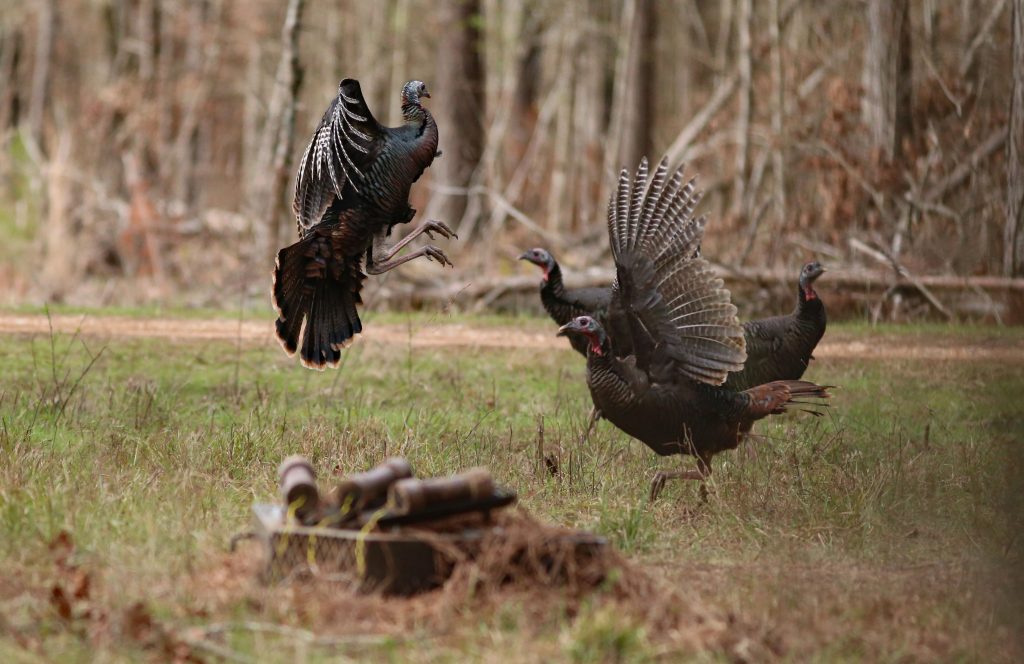Turkeys in the Crossroads
A look at wild turkey habitat and research from the nexus of the U.S. — the Hawkeye State.
America’s heartland, the breadbasket, flyover country … whatever you call the Crossroads of the United States, I can guarantee you it is turkey country. Great soil grows great habitats that produce abundant wildlife.
Yet, we are at a crossroads, figuratively and literally, in wild turkey management. Iowa is not immune to the wild turkey issues many states are observing. These concerns are sparking a resurgence of efforts into better understanding modern-day population dynamics of the wild turkey in the Hawkeye State. Known historically for some great contributions to wild turkey reintroductions and research, Iowa was coasting on an abundant population for more than four decades. Staff priorities shifted away from turkeys to other deserving topics. Recent observations and conversations, though, have led to a commitment of historical precedence in ensuring our wild turkey resource is here for future generations.
I often refer to Iowa as the nexus of the universe. We are the changing center point of many of the big habitats in the United States. The western edge of the eastern deciduous forests quickly dissolves as you cross the Mississippi River and head into the tall and, eventually, short-grass prairies of the West. Boreal forests and wetland potholes to the north give way to landscape 100,000 years older, one dominated by the oak and hickory timbers to the south. Each habitat type in the state provides its own challenges. These challenges, compounded by a highly dominated agricultural landscape, remind us that there will always be situations to which wildlife biologists and wildlife will have to adapt.
Issues such as changing habitats, changing land-use patterns and increased hunting pressure are impacting turkey populations in Iowa, along with many other states. Consequently, Iowa made a 10-year commitment to better understanding the wild turkey population. Most research projects have one objective and a short timeframe. We hope this 10-year commitment will allow us to overcome hurdles seen in other studies.
Originally designed to look at the plaguing issues of poult mortality, we quickly decided that we needed to take a step back and relook at historical research, update our population parameters, and introduce modern technology to create better baseline data. The 10-year commitment allows us to overcome annual weather variations and the landscape and winter severity issues that plagued past upper Midwest research projects. It also lets us train future turkey biologists on techniques and procedures they will employ throughout their careers.
Will instant answers result from this research? Probably not. Most research generates more questions than it answers, but this is a good feature. It keeps biologists in the moment. It keeps them thinking. More importantly, it keeps them focused on observations. Wild turkey biology will always be dynamic. The challenges will continue, but the commitment is to remember where we came from with turkey populations. With that same original commitment, we can achieve our goal of keeping common wildlife common.

Thus far, we are noticing things that were not apparent in prior studies. While much is still the same, there are some differences. Are they enough to be shifting the turkey population downward? For example, smaller clutch sizes and unhatched eggs are one concern. Several consecutive years’ worth of data may give us a better insight into this issue. We are also working with other states to examine egg fertility issues. Right now, this does not appear to be an issue, but collecting enough data to cross this off the list makes for a good day.
Habitat concerns in the Iowa landscape are always daunting. With much of the Iowa landscape confined to river bottoms and riparian areas, increased flood events are concerning. Timing of haying or cattle rotation may be an issue. Even the issues of unmanaged or overstocked woodlands and invasive species are of concern. GIS technology will hopefully allow us to take a better look at these issues.
The plate is full, but the commitment is strong. The goal is the resource and the people who use it. That is the message I leave the office with every day.
